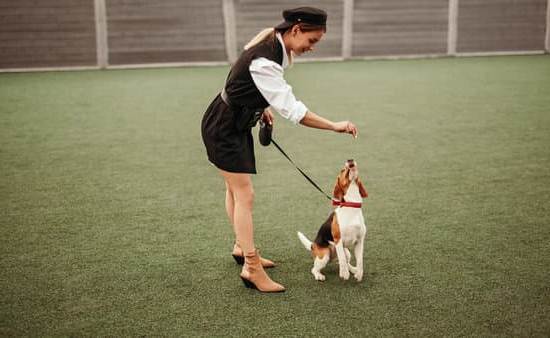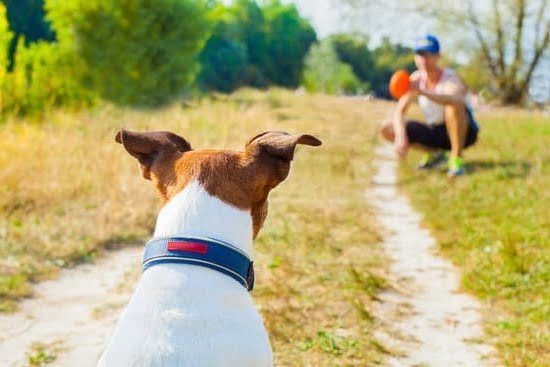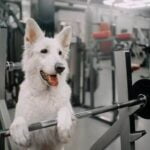Are you tired of constantly tripping over your dog’s toys? Do you wish there was a way to encourage your furry friend to clean up after themselves? In this article, we’ll explore the benefits of teaching your dog to put away their toys and provide you with a step-by-step guide on how to train them to do so. From understanding the advantages of this skill to troubleshooting common challenges, we’ve got you covered.
Teaching your dog to put away their toys not only helps keep your home tidy, but it also provides mental stimulation and reinforces positive behavior. By introducing the clean-up command to your dog and using positive reinforcement, you can make the process both fun and rewarding for them. Additionally, having a designated toy box area can help create organization and structure, making it easier for your dog to understand where their toys belong.
In this article, we’ll delve into the practical aspects of training your dog to put away their toys. From choosing the right toys for this purpose to maintaining consistency in the habit, we’ll walk you through each step of the training process. So get ready to say goodbye to scattered toys and hello to a cleaner, more enjoyable living space for both you and your furry companion.
Introducing the Clean Up Command to Your Dog
One of the most rewarding and practical commands you can teach your dog is how to put her toys away. Not only does it help keep your home tidy, but it also provides mental stimulation for your pup. Teaching your dog to clean up her toys can be a fun and bonding experience for both of you, but it requires patience and consistency.
To start training your dog to put away her toys, begin by introducing the “clean up” command. This can be done by using a specific verbal cue or hand signal to indicate that it’s time for your dog to pick up her toys and place them in the designated toy box.
Choose a command that is easy for your dog to understand, such as “clean up” or “put away.” Be sure to use the same command consistently every time you initiate the cleaning up process so that your dog associates the command with the action.
When teaching the clean-up command, it’s important to be patient and supportive with your dog. Use positive reinforcement such as treats, praise, and affection when she successfully puts away a toy. Avoid using punishments or negative reinforcement as this can discourage your dog and hinder progress. Remember that every dog learns at their own pace, so be patient and consistent in your training efforts.
Now that we’ve understood how crucial it is to introduce our dogs well on how they can learn how to put their toys away we can move on ahead by selecting appropriate toys for them which would make cleaning even more enjoyable.
| Steps | Description |
|---|---|
| Introduce Clean Up Command | Use specific verbal cue or hand signal consistently. |
| Be Patient and Supportive | Avoid punishments, use positive reinforcement. |
| Select Appropriate Toys | Choose toys that are easy for your dog to pick up. |
Choosing the Right Toys for Your Dog to Put Away
When teaching your dog to put away her toys, it’s important to choose the right toys that are conducive to the training process. Here are some key considerations when selecting toys for this purpose.
Size and Weight
First and foremost, consider the size and weight of the toys you want your dog to put away. Larger, heavier toys may be more challenging for your dog to handle, especially if she is a smaller breed. Opt for toys that are appropriate for your dog’s size and strength to ensure she can easily pick them up and carry them to the designated toy box.
Durability
Since the toys will be handled more frequently during training, it’s essential to choose durable options that can withstand wear and tear. Look for toys made of sturdy materials that won’t easily break or shred when handled by your dog. This will not only ensure the longevity of the toys but also prevent any potential hazards from broken pieces.
Novelty
Consider introducing a variety of new and different toys into the training process. Dogs can quickly lose interest in repetitive tasks, so having an assortment of toys can keep things engaging for your pet. Rotate different toys in and out of the training sessions to keep her interested in putting them away.
By considering these factors when choosing toys for your dog to put away, you can set her up for success in learning this helpful behavior. Remember that patience and consistency are key elements in training your dog to tidy up after playtime.
Creating a Designated Toy Box Area for Your Dog
Teaching your dog to put her toys away can be a fun and rewarding experience for both you and your furry friend. One important aspect of this training is creating a designated area for your dog to put away her toys. This will not only make it easier for your dog to understand where to place her toys, but it will also help keep your home organized.
When choosing a designated toy box area for your dog, consider a location that is easily accessible to your dog but out of the way of foot traffic. This could be in a corner of the room or even in the laundry room or mudroom. It’s important that the toy box is easily identifiable to your dog, so using a specific container or basket for her toys can help reinforce the behavior.
Once you have chosen the perfect spot for the toy box, introduce it to your dog and encourage her to interact with it. You can do this by placing some of her favorite toys in the box and using positive reinforcement when she shows interest in it. This will help her understand that the toy box is where her toys belong, and she will be more likely to engage with it during clean up time.
By creating a designated toy box area for your dog, you are setting her up for success in learning how to put away her toys. With consistency and positive reinforcement, she will soon understand that when it’s time to clean up, all she has to do is place her toys in the designated area, making clean up time both enjoyable and efficient.
Using Positive Reinforcement to Encourage the Behavior
Training your dog to put her toys away can be a fun and rewarding experience for both you and your furry friend. Using positive reinforcement is an effective way to encourage this behavior in your dog. Positive reinforcement involves rewarding desirable behaviors to increase the likelihood of their occurrence in the future. In the case of teaching your dog to put her toys away, positive reinforcement can help make the training process enjoyable and successful.
One way to use positive reinforcement is by providing treats or verbal praise when your dog successfully puts her toys in the designated toy box area. You can start by giving a command such as “clean up” or “put your toys away” while guiding your dog to pick up a toy and place it in the toy box.
Once she does so, immediately praise her and offer a treat as a reward. Consistency is key when using positive reinforcement, so be sure to consistently reward your dog each time she follows the command.
In addition to treats and verbal praise, you can also use toys or playtime as rewards for putting her toys away. If there are specific toys that your dog particularly enjoys, you can use them as a motivational tool during training.
For example, after your dog has successfully put several toys away, engage in a short play session with her favorite toy as a special reward. By associating the act of cleaning up with positive outcomes such as treats or playtime, your dog will be more likely to continue this behavior in the future.
| Positive Reinforcement Method | Example |
|---|---|
| Treats | Offering a treat each time the dog puts a toy away |
| Verbal Praise | Praising the dog with enthusiastic words each time she cleans up |
| Toy Rewards | Using special playtime with favorite toys as a reward for cleaning up |
Troubleshooting Common Challenges in Teaching Your Dog to Put Away Toys
Teaching your dog to put away their toys can be a fun and rewarding experience for both you and your furry friend. However, it’s not always smooth sailing, and there may be some common challenges that you encounter along the way. Here are some troubleshooting tips to help you navigate through these challenges:
1. Lack of Interest: If your dog seems uninterested in putting away their toys, try making the activity more exciting for them. You can use treats or their favorite toy as a reward for successfully putting away a toy. This positive reinforcement can help motivate them to engage in the behavior.
2. Distraction: Dogs can easily get distracted, especially during training sessions. To combat this challenge, choose a quiet and calm environment for training. Minimize any potential distractions, such as other pets or loud noises, that could take your dog’s attention away from the task at hand.
3. Resistance to New Command: Introducing a new command may take some time for your dog to understand and respond to. Be patient and consistent when teaching the “clean up” command. Use clear and simple cues, such as pointing to the toy box or using a specific verbal command, to help your dog associate the action with the desired behavior.
By addressing these common challenges with patience and creativity, you can help your dog learn how to put away her toys effectively and make clean up time an enjoyable experience for both of you.
Making Clean Up Time Fun and Engaging for Your Dog
Dogs love to play and interact with their toys, but oftentimes they may not understand the concept of cleaning up after themselves. Making clean up time fun and engaging for your dog is an essential step in training them to put away their toys. By incorporating certain techniques and activities, you can make this process enjoyable for your furry friend.
One way to make clean up time fun for your dog is by turning it into a game. You can start by using the “Fetch” command to have your dog retrieve each toy and bring it back to the designated toy box area.
This not only encourages them to participate in the clean-up process but also allows them to engage in a familiar and enjoyable activity. Additionally, using treats or a favorite toy as a reward for successfully putting away their toys can make the experience more exciting for your dog.
Another method to make clean up time engaging for your dog is by incorporating music or a cheerful tone of voice while giving commands. Dogs are highly responsive to sound and mood, so by creating a positive atmosphere during clean up time, they are more likely to enjoy participating in the activity. You can also use verbal praise and encouragement as they put their toys away, reinforcing the behavior and making it an enjoyable experience for them.
In addition, incorporating interactive toys that require some level of problem-solving or physical activity can make clean-up time more engaging for your dog. Toys that dispense treats when manipulated or puzzle toys that require them to work in order to retrieve a treat can be used as incentives during clean-up time.
This not only makes the process fun for your dog but also provides mental stimulation, enhancing their overall well-being. With these tips, you can effectively make clean up time an enjoyable and rewarding experience for your beloved pet.
Celebrating and Reinforcing the Behavior
Training your dog to put away her toys can be a fun and rewarding experience for both you and your furry friend. Once your dog has mastered the clean up command and consistently puts her toys in the designated toy box area, it’s important to celebrate and reinforce this behavior. By doing so, you can ensure that your dog continues to put her toys away without any hesitation.
Here are some ways to celebrate and reinforce the behavior of putting away toys:
1. Verbal Praise: Whenever your dog successfully puts her toys away, make sure to give her plenty of verbal praise. Use an enthusiastic tone of voice to let her know that she’s done a great job. For example, say “Good girl.” or “Well done.” This positive reinforcement will encourage her to continue putting away her toys in the future.
2. Tasty Rewards: In addition to verbal praise, you can also offer your dog a tasty treat as a reward for putting away her toys. Choose a small, healthy treat that she enjoys and give it to her immediately after she completes the task. Over time, she will associate putting away toys with receiving a delicious treat, making it more likely that she will continue the behavior.
3. Playtime: Another way to celebrate and reinforce the behavior of cleaning up toys is by engaging in playtime with your dog afterwards. After she has put away her toys, spend some quality time playing with her favorite games or participating in an activity that she loves. This positive association will further motivate her to continue cleaning up after herself.
By consistently celebrating and reinforcing the behavior of putting away toys, you can ensure that your dog continues this good habit for years to come.
Consistency Is Key
In conclusion, teaching your dog to put away her toys can be a rewarding and enjoyable experience for both you and your furry friend. The benefits of having a well-trained dog who can clean up after herself not only helps keep your home tidy but also strengthens the bond between you and your pet.
By introducing the clean up command, choosing the right toys, creating a designated toy box area, using positive reinforcement, troubleshooting challenges, and making clean up time fun, you can successfully train your dog to put away her toys.
One key aspect of maintaining this behavior is consistency. Just like any training, consistency is crucial in reinforcing the habit of putting away toys. It’s important to continue practicing the clean up command regularly and ensuring that your dog understands what is expected of her. Consistently using positive reinforcement and celebrating the behavior will help solidify this habit in your dog’s routine.
Additionally, it’s essential to remember that every dog is different and may progress at their own pace when learning new behaviors. Be patient and understanding as you train your dog to put away her toys. With dedication and persistence, you can achieve success in teaching your dog this useful skill. And always remember, with consistent training and positive reinforcement, you can make cleaning up an enjoyable activity for both you and your beloved pet.

Welcome to the blog! I am a professional dog trainer and have been working with dogs for many years. In this blog, I will be discussing various topics related to dog training, including tips, tricks, and advice. I hope you find this information helpful and informative. Thanks for reading!





